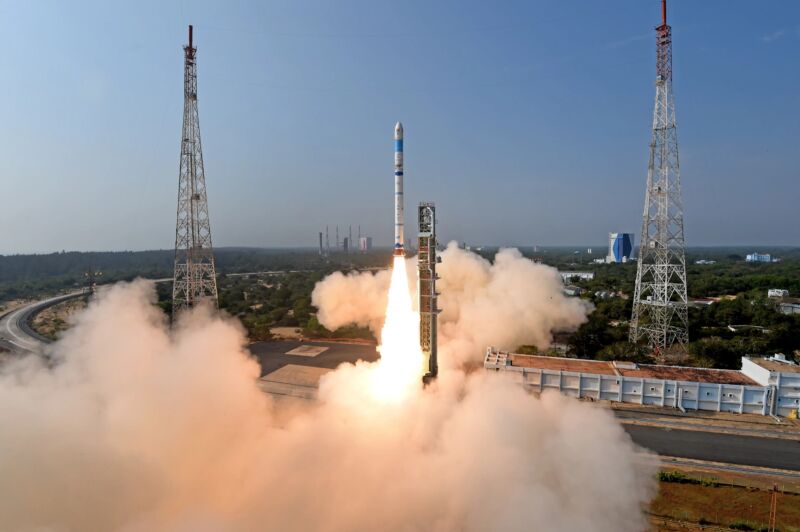Welcome to Edition 5.26 of the Rocket Report! This week, I would like to congratulate the Indian space agency ISRO on the successful second flight of the SSLV rocket, which adds a new micro-launch capability to the nation's growing fleet of rockets. This is a difficult business, and success should definitely be celebrated when it is finally attained.
As always, we welcome reader submissions, and if you don't want to miss an issue, please subscribe using the box below (the form will not appear on AMP-enabled versions of the site). Each report will include information on small-, medium-, and heavy-lift rockets as well as a quick look ahead at the next three launches on the calendar.

India's SSLV soars on second launch. The second test flight of India’s Small Satellite Launch Vehicle was successful last Friday, delivering Indian and US-owned payloads into orbit, Spaceflight Now reports. The mission followed the first SSLV test flight in August, which failed during separation of the second stage about six minutes after liftoff, when vibrations threw off the vehicle’s inertial navigation system.
Going for two in March ... The small rocket is designed to carry payloads of up to 500 kg into orbit, complementing India’s larger rockets, the Polar Satellite Launch Vehicle and the Geosynchronous Satellite Launch Vehicle. After the launch the Indian space agency said it is preparing for two missions in March, one using the country’s heavy-duty GSLV Mk.3 rocket for 40 Internet satellites for OneWeb and another for commercial customers using the Polar Satellite Launch Vehicle. (submitted by EllPeaTea and Ken the Bin)
SpaceRyde files for bankruptcy. The Canadian launch company building an inexpensive small-lift rocket with a balloon first stage filed for bankruptcy last Friday, Payload reports. The company planned to use a stratospheric balloon to lift the vacuum-optimized "Ryder" rocket above 99 percent of the atmosphere, release the vehicle, and ignite its engines. Previously, the company had intended to start commercial launch operations in 2024, lifting up to 150 kg to orbit.
Ryde or die ... One of the factors that likely contributed to the bankruptcy filing was public contention around an engine testing facility in the Trent Hills municipality of Ontario, about two hours from Toronto and relatively near populated areas. However, the bigger picture is probably that the company had an unrealistic business plan, a long way to go in terms of technology development, and a lack of funding amid a worsening environment to raise capital. Alas, it won't be the last launch startup to file for bankruptcy. (submitted by Ken the Bin and Rendgrish)
Virgin Orbit updates on launch failure. On Tuesday, Virgin Orbit provided more information about the failure of its LauncherOne vehicle during a mission that originated from Cornwall, England, on January 9. The ignition, first-stage flight, stage separation, second-stage ignition, and fairing deployment of the LauncherOne rocket were all nominal. The problem came with a premature second-stage shutdown, the company confirmed. "The data is indicating that from the beginning of the second stage first burn, a fuel filter within the fuel feedline had been dislodged from its normal position," the company said.
Payloads dropped back into the Atlantic ... "Additional data shows that the fuel pump that is downstream of the filter operated at a degraded efficiency level, resulting in the Newton 4 engine being starved for fuel," the company said. "Performing in this anomalous manner resulted in the engine operating at a significantly higher than rated engine temperature. Components downstream and in the vicinity of the abnormally hot engine eventually malfunctioned, causing the second stage thrust to terminate prematurely." Virgin said its next launch will take place for a commercial customer from Mojave, California. Frankly, I'm more interested in the company's next earnings report than its next launch. That will tell the tale of the company's fate, as I have high confidence they can get back to flying LauncherOne safely provided the funding is there. (submitted by Ken the Bin)



3175x175(CURRENT).thumb.jpg.b05acc060982b36f5891ba728e6d953c.jpg)

Recommended Comments
There are no comments to display.
Join the conversation
You can post now and register later. If you have an account, sign in now to post with your account.
Note: Your post will require moderator approval before it will be visible.